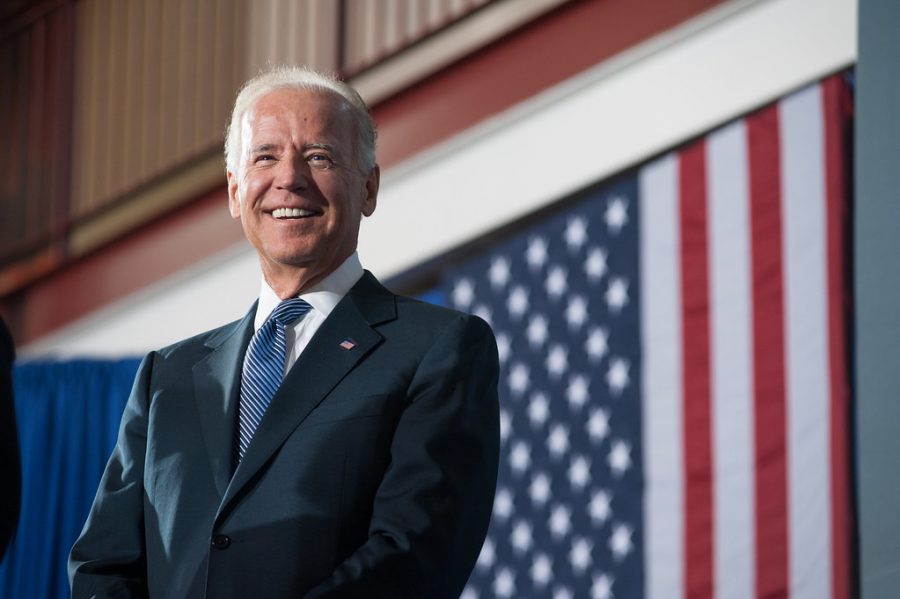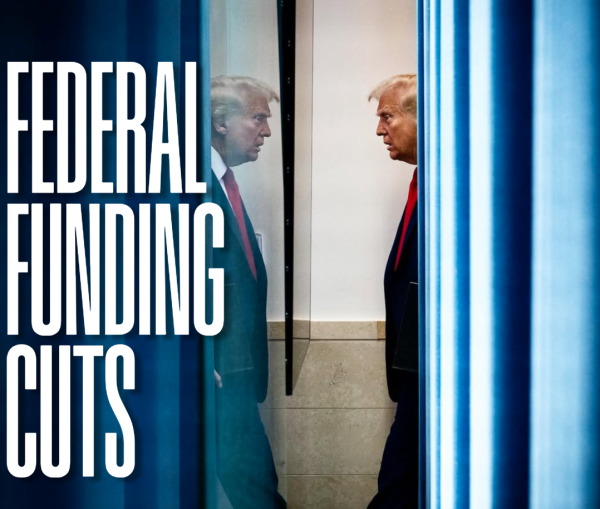Biden Banking on the Blue Wall
Former Vice President Biden holds a moderate appeal which could allow him to defeat President Trump in 2020. (Courtesy of Flickr)
By Timothy Kyle
On April 25, Joe Biden officially entered the 2020 presidential race, upending the already-packed Democratic field and quickly emerging as the frontrunner. Although he may not have the grassroots support or massive social media presence of more “exciting” candidates like Bernie Sanders or Andrew Yang, Biden remains the best candidate to beat President Trump in 2020. If the Democrats want to have any chance of retaking the White House, they must rally behind Biden and ensure that he wins the nomination.
It isn’t hard to see how Trump could win again. He possesses a large, enthusiastic base that seems willing to support him through hell and high water. The economy is booming, and all signs point to it continuing to do so until after the 2020 election, barring a sudden crash — a boon for any incumbent seeking re-election. Most importantly, he has built a powerful coalition of voters in the Midwest, voters that might once have considered themselves Democrats but felt left behind by the party’s increasingly progressive rhetoric and apparent disregard for the country’s heartland.
Enter Joe Biden. An avowed moderate, Biden is attempting to forge a balance between the nativist populism of Trump and the progressive populism of Sanders — a potent strategy that will fare well in the blue-collar Midwest. Traditionally favoring moderate or “blue-dog” Democrats who are strong on labor and working class rights but less socially liberal than their coastal counterparts, the Midwest went strongly for Trump during the 2016 election whose rhetoric about the “forgotten man” appealed to them over the rank elitism that defined Hillary Clinton’s campaign. Michigan and Wisconsin, both traditionally strongholds for the Democrats and their labor union supporters in the Rust Belt, flipped from blue to red for the first time since the 1980s. It’s clear that the Democrats can no longer rely on the once-solid “Blue Wall” of the Midwest, and nominating someone who is unable to connect with the voters there would be a catastrophic mistake.
It’s possible that Bernie Sanders could provide some of the same economic strength, but many of his other policy proposals, like allowing felons in prison to vote, or broad student loan forgiveness, might lean a little too progressive for a voting bloc that prioritizes economic security over sweeping liberal reforms — and Biden knows this. He has already repudiated Sanders’ signature Medicare-For-All proposal and proposed a less extreme version of the now-widespread free four-year college plan endorsed by many Democrats that also includes vocational training for workers. Though perhaps not as comprehensive as the party’s increasingly liberal base desires, Biden’s policy measures are well-suited and just moderate enough to appeal to the workers in the Rust Belt that need to be wooed to win the region back.
If he wants to have a chance of beating Trump in 2020, Biden must stick close to his pro-worker, blue-collar bonafides and refrain from falling into the same trap Clinton did in 2016 — attacking a President who is content to shatter all norms both in office and on the campaign trail.
If he keeps his messages focused on economic concerns like rebuilding the middle class and away from the “resist” movement that seems to be fueling much of the Democratic field, Biden has, far and away, the best chance of any candidate at beating Donald Trump.
Timothy Kyle, FCRH ’21, is a history and political science major from West Hartford, Connecticut.








































































































































































































